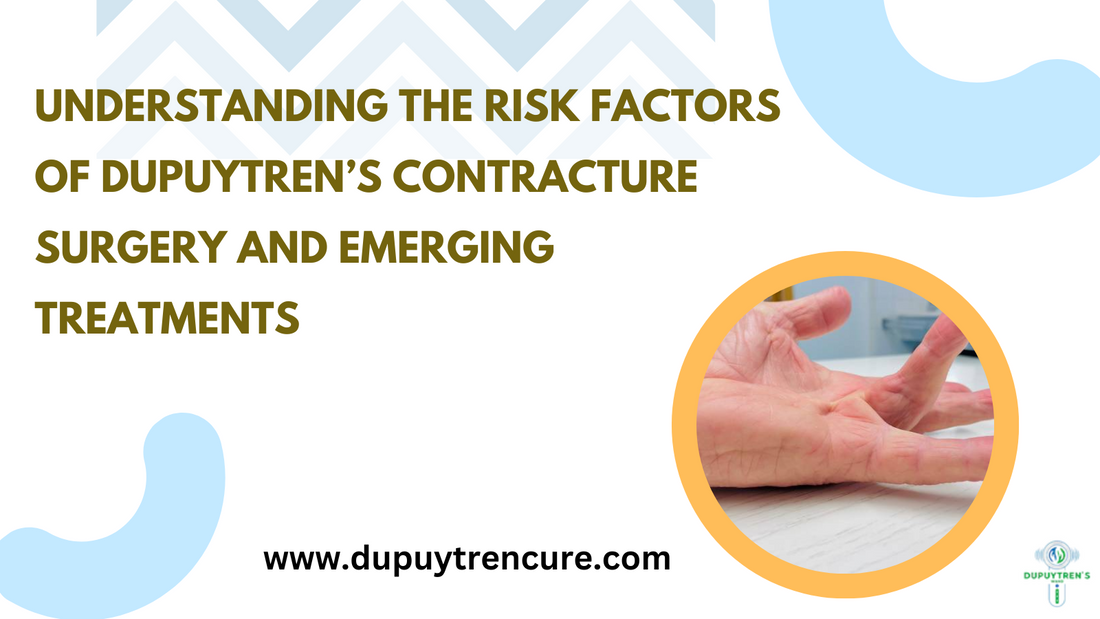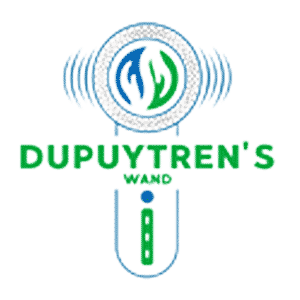
Understanding the Risk Factors of Dupuytren’s Contracture Surgery and Emerging Treatments
Share
Dupuytren's contracture, a condition where the fingers progressively bend towards the palm, can severely limit hand functionality. Over time, the condition can make everyday activities, such as gripping objects or shaking hands, increasingly difficult and uncomfortable. For many, surgery becomes a necessary step to restore hand function. However, as with any surgery, Dupuytren’s contracture surgery is not without its risks. It’s important to be aware of the potential complications associated with the procedure, and also to explore emerging non-invasive treatments that offer promising alternatives.
Common Risk Factors of Dupuytren’s Contracture Surgery
1. Scar Tissue Formation
One of the most common complications following Dupuytren’s contracture surgery is the development of scar tissue. While some scarring is inevitable, the formation of excessive scar tissue can lead to further tightness in the hand and, in some cases, may even worsen the condition. Invasive surgery can also result in pain that is more significant than the original discomfort caused by the disease itself.
2. Skin Damage and Tightness
Skin damage is another risk associated with surgical treatment. Some procedures may require skin grafts to close surgical wounds. While this can help with healing, it can also lead to additional tightness and reduced flexibility of the skin, which may affect hand function in the long run.
3. Nerve Injury
Because Dupuytren’s cords can sometimes surround nerves in the hand, there is a risk of nerve injury during surgery. If the nerve is damaged, it can lead to numbness, tingling, or even permanent loss of sensation in the affected fingers. This risk is a key factor in why many patients seek less invasive treatments whenever possible.
Emerging Treatments for Dupuytren’s Contracture
While surgery is a well-known treatment option for Dupuytren’s contracture, advancements in non-surgical treatments are offering patients effective alternatives with fewer risks.
1. Dupuytren’s Tape
One of the most promising non-surgical treatments gaining popularity is Dupuytren's Tape. This innovative solution is designed to help reduce the contracture and restore normal hand function without the need for invasive surgery. Dupuytren's Tape works by gently applying tension to the affected area, which can help realign the fingers and improve grip.
The key advantage of Dupuyten’s Tape is that it can be worn continuously—both day and night—providing a consistent, long-term solution for managing the condition. This non-invasive option offers patients a way to restore normal functionality and alleviate discomfort without undergoing surgery or dealing with its associated risks. Many individuals have even shared how they cured their Dupuytren’s contracture naturally using Dupuytren’s Tape, highlighting its effectiveness.
2. Collagenase Injections (Xiaflex)
Another emerging treatment is the use of collagenase injections. This FDA-approved treatment involves injecting an enzyme directly into the Dupuytren’s cords, which helps break down the collagen buildup causing the fingers to bend. It’s a minimally invasive option that can offer significant improvement in hand function, reducing the need for surgery.
Dupuytren's Viking Disease and Natural Remedies
Some people refer to Dupuytren’s contracture as Dupuytren's Viking Disease due to its prevalence in northern European populations. Interestingly, there are growing discussions about natural remedies for Dupuytren’s contracture as well. While these remedies have not been conclusively proven in clinical trials, some individuals have found relief from stretching exercises, dietary changes, and alternative therapies. These treatments may help slow the progression of the disease, but they should always be used alongside medical advice.
Conclusion
While surgery for Dupuytren’s contracture can provide relief, it carries certain risks, including scar tissue formation, skin damage, and nerve injury. Fortunately, modern treatments like Dupuytren's Tape offer a Dupuytren contracture new treatment that provides a non-invasive alternative with minimal disruption to your daily life. If you are noticing symptoms of Dupuytren’s contracture, consult with your healthcare provider to explore the best treatment options for your needs, whether surgical or non-surgical.
